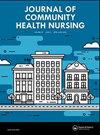中国农村老年人的焦虑、抑郁、慢性疼痛和生活质量:一项观察性、横断面、多中心研究
IF 0.9
4区 医学
Q4 NURSING
引用次数: 5
摘要
【摘要】目的了解中国农村老年人焦虑和抑郁的发生率,并研究其与慢性疼痛和生活质量的横断面相关性。设计观察性、多中心、横断面研究。方法采用结构化的自我报告问卷。描述性统计分析和逐步多元线性回归分析。结果共244人(女性47.1%)填写了问卷。有焦虑症状87例(35.7%),有抑郁症状123例(50.4%)。感觉疼痛描述、情感疼痛描述、身体成分总结和精神成分总结显著影响焦虑症状,而情感疼痛描述、身体成分总结和精神成分总结显著影响抑郁症状。结论主观疼痛体验和生活质量(包括生理和心理领域)与中国农村老年人焦虑和抑郁症状密切相关。临床证据强调主观疼痛体验和生活质量的干预措施可能有助于缓解老年人的焦虑和抑郁症状。本文章由计算机程序翻译,如有差异,请以英文原文为准。
Anxiety, Depression, Chronic Pain, and Quality of Life Among Older Adults in Rural China: An Observational, Cross-Sectional, Multi-Center Study
ABSTRACT Purpose To determine the incidence of anxiety and depression and examine their cross-sectional associations with chronic pain and quality of life among older adults in rural China. Design Observational, multi-center, cross-sectional study. Methods A structured, self-report questionnaire was administered. Descriptive statistics analysis and stepwise multiple linear regression analysis were performed. Findings 244 participants (female: 47.1%) filled out the questionnaires. 87 (35.7%) had symptoms of anxiety and 123 (50.4%) had symptoms of depression. The sensory pain descriptor, affective pain descriptor, physical component summary, and mental component summary significantly influenced symptoms of anxiety while affective pain descriptor, physical component summary, and mental component summary significantly influenced symptoms of depression. Conclusion Subjective pain experiences and QoL, including physical and mental domains, are strongly related to symptoms of anxiety and depression among older adults in rural China. Clinical Evidence Interventions that highlight subjective pain experiences and QoL may help to relieve symptoms of anxiety and depression in older adults.
求助全文
通过发布文献求助,成功后即可免费获取论文全文。
去求助
来源期刊
CiteScore
1.40
自引率
10.00%
发文量
21
审稿时长
3 months
期刊介绍:
This innovative publication focuses on health care issues relevant to all aspects of community practice -- home health care, visiting nursing services, clinics, hospices, education, and public health administration. Well-researched articles provide practical and up-to-date information to aid the nurse who must frequently make decisions and solve problems without the back-up support systems available in the hospital. The journal is a forum for community health professionals to share their experience and expertise with others in the field.

 求助内容:
求助内容: 应助结果提醒方式:
应助结果提醒方式:


